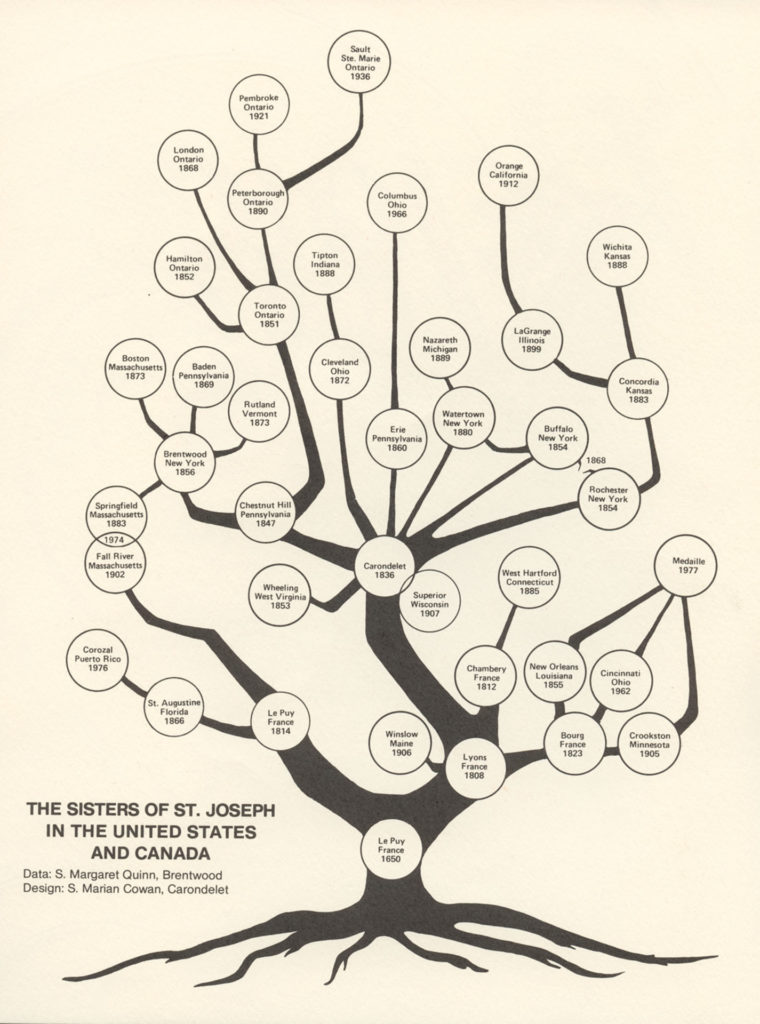Our Early History
The story begins long ago, across an ocean, in France. Thirty years of war (1618 – 1648) had left widows and orphans living with poverty and disease. During this time, religious orders lived apart from others and were only open to those who gave money, land or goods to the orders.
A Jesuit priest, Father Jean Pierre Médaille S.J. wanted to change this. On October 15, 1648, he gathered six women together in Le Puy-en-Velay, France. The women were Françoise Eyraud, Clauda Chastal, Marguerite Burdier, Anna Chaleyer, Anna Vey and Anna Brun. They founded a religious institute on feast of St. Theresa of Avila, October 15, 1650 in Le Puy. On the feast of St. Theresa of Avila, October 15, 1650, the religious institute known as the Congregation of the Sisters of St. Joseph was founded in Le Puy.
Fr. Medaille’s ideas were known as the Little Design. The community formed small groups, took simple vows, dressed and lived simply, owned no property, and made lace to support themselves. They worked among ordinary people rather than being cloistered, and opened their community to everyone regardless of social class. They believed that service to their dear neighbor, their own salvation, and unity with God were interconnected. Their goal was to “divide the city, seek out its ills, and cure them.” The Sisters found out peoples’ needs from the people themselves, and encouraged lay people to help them. They worked to serve others in corporal and spiritual works of mercy, without distinction. They spread through France.
On March 3, 1759, Jeanne Fontbonne was born in Fontbonne in Bas-en-Basset, Haute Loire, France. She would later be known as Mother St. John Fontbonne, and play an important role in the history of the Congregation.
And then the French revolution struck in 1789. The revolutionary government tried to make the Sisters take the Oath of the Civil Constitution of the Clergy. This gave approval to separate the Church in France from papal authority. It enabled the government to appoint all bishops. The Sisters refused, and the congregation was outlawed.
The Sisters fled, but some were imprisoned. Five died at the guillotine for sheltering priests who refused to take the oath, including on June 17, 1794, Sister Saint Alexis (Jeanne Marie Aubert) and Sister Saint Julien (Marie Anne Garnier). On August 5, 1794 Sister Holy Cross (Antoinette Vincent), Sister Madeleine (Marie-Anne Sénovert) and Sister Toussaint (Madeleine Dumoulin ) were also beheaded. Others went into hiding or returned to their families.
Jeanne Fontbonne had entered the novitiate in 1778 and been made Superior of the Monistrol convent. Known as Mother St. John when the revolution took place, she refused to leave and was dragged out by the mob. She returned to her family home but was soon imprisoned. She was to be executed in 1794, but her life was spared by the fall of Robespierre the very day before her execution. She again returned to her family home. When the revolution ended in 1807, she became head of a community of girls and women from dispersed congregations at Saint Etienne. Cardinal Fesch of Lyon, the uncle of Napoleon Bonaparte, advised this community become the Sisters of St. Joseph. She reopened the convent at Monistrol, and the congregation received government approval in 1812.
After the revolution, bishops, encouraged by Napoleon I, wanted Sisters to unite into larger congregations governed by General Superiors. Mother St. John Fontbonne was appointed General Superior and opened the motherhouse and novitiate at Lyon in 1816. The parish priest, later known as St. John Vianney supported her work. The congregation put down roots in other parts of France, including Chambery. During her lifetime, Mother St. John Fontbonne saw the establishment of over 200 new communities. She died on November 22, 1843 and is buried in the Cemetery of Loyasse in Lyon France. But, before she died she saw the expansion of the congregation to North America.
In 1836, Bishop Rosati of St. Louis asked Mother St. John to send Sisters to teach Deaf children. Six Sisters sailed to North America from Le Havre, France on January 17, 1836. They were: Sisters Fébronie and Delphine Fontbonne, Marguerite-Félicité Bouté, Fébronie Chapellon, St. Protais Deboille and Philomène Vilaine. They arrived in St. Louis, Missouri on March 25, 1836. Three of them lived in a log cabin at Carondelet, Missouri.
Three of them moved to Cahokia, Illinois. In 1847, another Sister from Lyon, Mother John Fournier, went to Philadelphia to care for orphans. In 1854, Sisters went from Carondelet to Buffalo to teach the Deaf, and also travelled to Rochester. From Buffalo, Sisters went to Watertown, New York, and from there to Erie, Pennsylvania and Kalamazoo, Michigan. From Rochester, Sisters went to Concordia, Kansas.
In 1856, Mother Austin Kean at request of Brooklyn Bishop, founded the Brentwood congregation. After this, Sisters spread throughout the USA, and congregations are now found in many states including Maine, Connecticut, New York, Massachusetts, Pennsylvania, Michigan, Indiana, Illinois, Ohio, West Virginia, Florida, Missouri, Louisiana, Minnesota, Kansas, and California.
Mother Delphine Fontbonne, a niece of Mother St. John, and three other Sisters travelled from Philadelphia to found the Toronto congregation in 1851. The next year, in 1852, three Sisters from Toronto founded the Hamilton congregation. Later, in 1868, five Sisters from Toronto established the London congregation. The Peterborough congregation was established by 20 Sisters from Toronto in 1890. In 1921, a new Pembroke congregation was formed by 27 Sisters from Peterborough. The last Canadian community was established in 1936 in Sault Ste. Marie by Peterborough Sisters.

